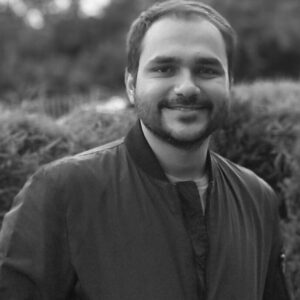Building a toolkit for engagement
The CCQOL project aims to create a new model for engagement that is map-based and hybrid, so both digital through an online platform and face-to-face engagement through urban rooms. An important element in that is the creation of a toolkit for engagement, detailing what steps need to be taken to achieve a hybrid approach. Here, Ruchit Purohit, Research Assistant at the University of Reading, explains the process.

The aim of the toolkit is to lay down steps for a community partnerships manager in a successful build-up towards delivering the urban room. It assists the manager in mapping the existing networks of the area to be consulted, and to work towards reaching out to the often-overlooked communities.
The toolkit is in its developmental stage. It is an ongoing document which is coproduced and edited as the project progresses. This will be tested first with the Reading pilot community partnerships manager and successively used by the Cardiff, Edinburgh, and Belfast managers.
The toolkit asks relevant questions such as what defines capacity building, and for whom? It charts out a timeline to achieving this and in this initial case for four months. Working backwards towards the goals of an inclusive urban room (and so that we achieve the goal for participation of diverse communities) the team needs to build capacity throughout.
Defining the area
The first step is to decide the boundary of the area to be consulted and then to map out all the relevant stakeholders in this area. Stakeholders here comprise all the relevant bodies that should be consulted i.e. the local bodies, statutory consultees, businesses, organisations and community groups.
The second step is to find out the demographic details of the borough based on the criteria: age, sex, ethnicity, employment, education, sexuality, faith.
The third step is to map the history of consultation process in the borough, any ongoing consultations, existing urban rooms, and to chart out existing networks of organisations.
Contacting stakeholder groups
To achieve this, we write to organisations to understand the type of organisation, the audience it serves, the breakdown of audience, the communication tools that it uses to connect with its audience and so on so forth.
These exercises help the team in gap analysis i.e. to understand if the team has been successful in reaching out to all the communities in the local area.
In addition, the forms also ask the organisations/groups their view of the topic being discussed in each Urban Room, if something like this has been done in the past and what is the perception of their audience towards this topic. This helps in shaping the consultation topic before the launch of the Urban room.
Prior to sending out the survey to every organisation, the questions are being asked to selected representatives in a semi-structured interview format to understand if the questions are satisfactory. Three such interviews have been undertaken so far. A focus group with such representatives has also been planned in January 2022 for collecting research on the barriers to participation.
Next steps
The next steps in the toolkit are programme planning and design of the Urban room. A list has been created with existing resources available. We will ask groups wishing to participate in the programme by hosting an event/session and to schedule a date in the calendar.
Already, there have been many learnings through the development of this process. Diversity and Inclusion is the core of this project and we hope the Urban Room in March and subsequent ones in other cities become a shining example.